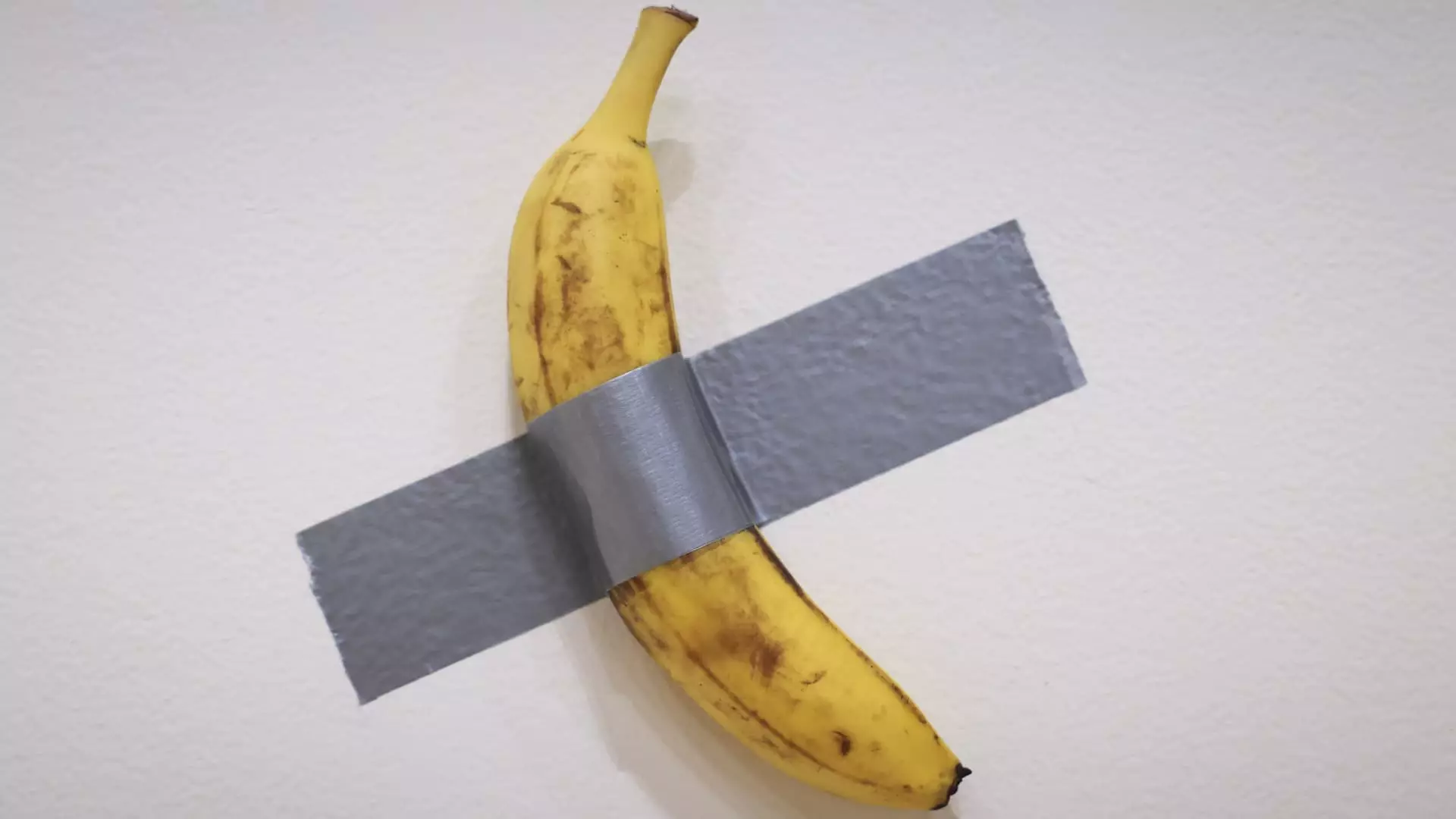The recent auction of a banana duct-taped to a wall for an astounding $6.2 million spotlights a cultural moment defined by the convergence of contemporary art, cryptocurrency, and social media phenomena. The piece, aptly titled “Comedian,” by Italian artist Maurizio Cattelan, transcends conventional boundaries of artistic expression. To understand the implications of this sale, one must examine the conditions that allowed for such a ludicrous valuation and what this reveals about the current state of wealth in society.
When “Comedian” first appeared at Art Basel Miami Beach in 2019, it was priced at $120,000 but quickly captivated the public’s attention through social media virality. This piece epitomizes how digital engagement can amplify a work’s status, suggesting that the realm of art has shifted considerably. No longer is the physical artwork the ultimate focus; instead, the conversations it sparks and the memes it generates play a crucial role in its valuation. The allure of the banana comes not just from its simple form but from its ability to engage with the public on multiple levels—both as an absurd commentary on consumerism and as a reflection of today’s cultural zeitgeist.
Even the auction process itself has evolved. Justin Sun’s successful bid was not just a typical financial transaction but a spectacle showcasing not only wealth but also the intersection of digital finance and art. The decision to accept cryptocurrency as payment by the seller is telling, as it highlights a growing acceptance of non-traditional currencies in high-value art transactions.
Sun eloquently noted that “Comedian” embodies a “cultural phenomenon” that fuses art, memes, and the cryptocurrency community. This commentary is crucial; the banana, devoid of intrinsic value, challenges the notion of what constitutes art and ownership. In a manner reminiscent of Marcel Duchamp’s ready-mades, such as “Fountain,” Cattelan’s creation provokes us to rethink value itself—not merely as a financial metric, but as a social and cultural marker.
Moreover, the conceptualization of the banana as an art piece is intertwined with society’s obsession with instant gratification and superficiality. Like a meme, it is both fleeting and enduring; the giggles it incites mask a deeper inquiry into contemporary wealth and status. When Sun claims he plans to eat the banana as part of his artistic experience, he unveils the absurdity of valuing a perishable object while recognizing its importance in both art history and modern popular culture.
The auction represents not just a personal investment for Sun, but signals a potential revival in the art market following two years of economic decline. This resurgence correlates with rising stock market confidence and a repositioning of wealth among the elite. High-value auctions across leading houses like Sotheby’s and Christie’s are attracting wealthy collectors eager to invest in tangible assets after the unpredictability of crypto markets.
However, this raises critical questions regarding the role of wealth in art curation. As banking systems and investment portfolios increasingly include non-traditional assets like art and NFTs, who decides the narratives surrounding value? The appetite for spectacular auction items, such as Sun’s banana, points to broader societal values which celebrate ostentation and excess, rather than a more profound appreciation for artistry, craft, and history.
Ultimately, the auction of “Comedian” serves as a pivotal case study in the ongoing evolution of contemporary art and the complexities of wealth in the digital age. It invites us to reconsider not just what art is, but who defines its worth. As both the art world and the crypto market continue to grow intertwined, they reflect broader societal shifts in perception toward cultural artifacts—their intrinsic versus extrinsic value, their capacity to inspire dialogue, and their role in a rapidly transforming economic landscape. The greatest takeaway might be that art, much like cryptocurrencies, is increasingly a reflection of societal trends and values, easily shaped and reshaped by the whims of public opinion and market dynamics.

